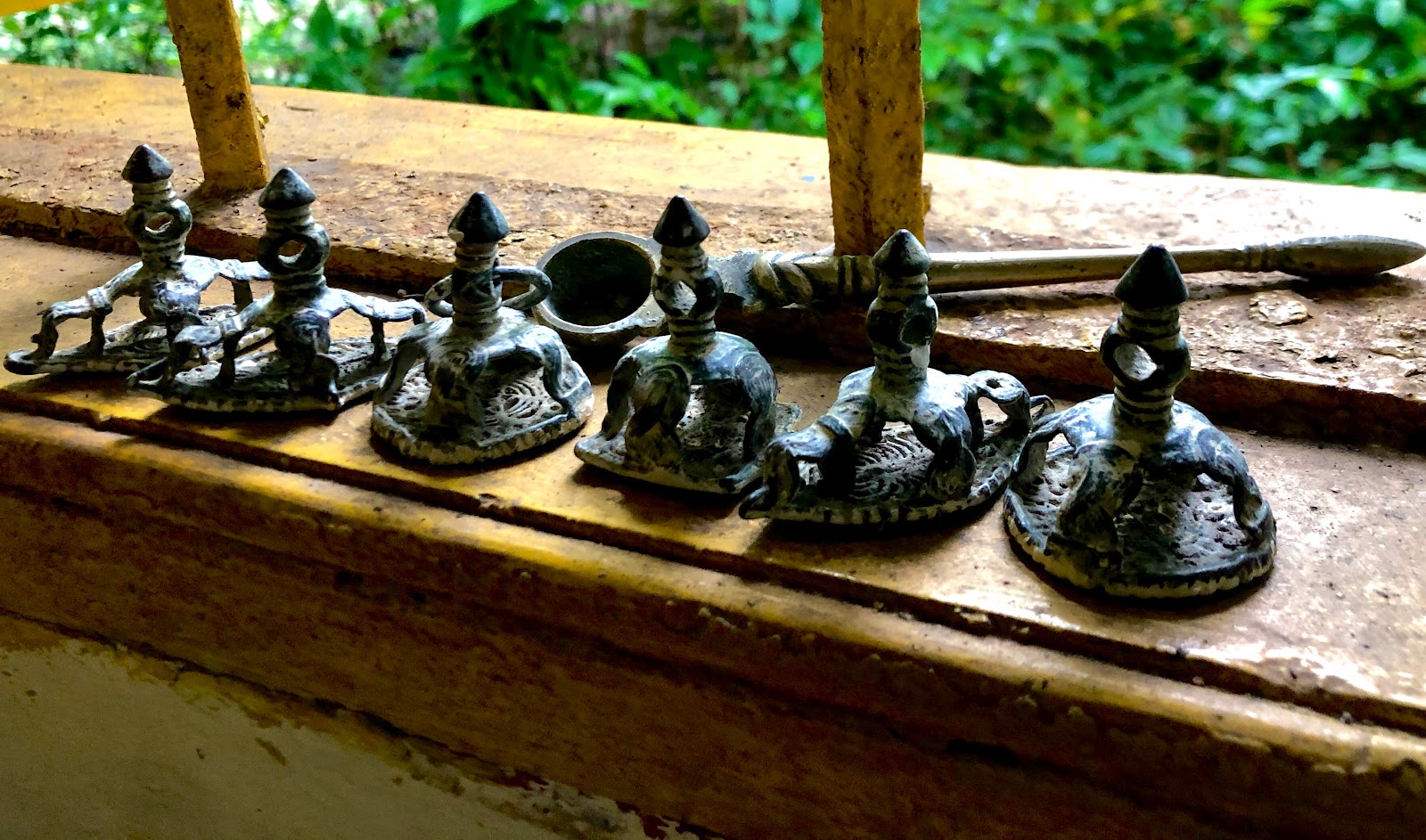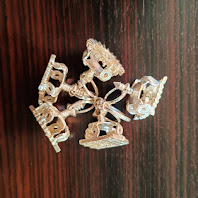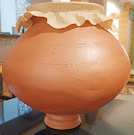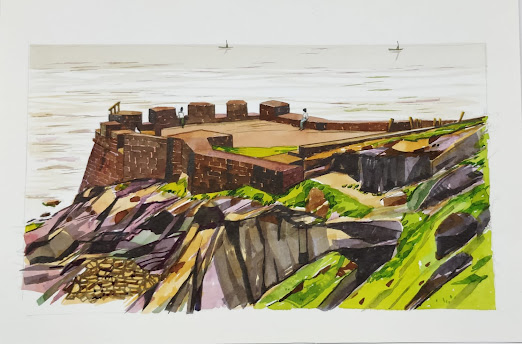PANCH MUDRAS
 |
| Copper Panch Mudras |
The Indian subcontinent with rich cultural heritage is a home for World renowned religions. Diversity being India's celebrated quality, the massive population of the country is diversely categorised into several religions. One such prominent religion with highest devotees of the nation is Hinduism. In fact, centuries back India was proudly called Hindustan by the Rajput kings, this shows how Hinduism as a religion has blended into the lifestyle of people. Hinduism is further sub categorised into two major sects; they are Vaishnavism and Shaivism. The vaishnavism followers worshipped lord Vishnu and the Shaivism followers worshipped lord Shiva. Both of the sectarians used Tilak/mudra stamps to draw a symbolic mark traditionally known as Tilak in Sanskrit to denote their religious Lineage. Every Hindu simply considered wearing their respective tilak as the utmost pride of their existence. Even today in this millennial Era the practice of wearing tilak is still seen in a few places. Tilak is generally drawn using a paste made of ash, sandalwood, turmeric, vermillion and clay. The Tilak paste differs from one sect to another . At shaivism Ash which is known as vibhuti happens to be the prior material to indicate Tilak. While in vaishnavism sandalwood and clay is mixed to create the Tilak paste.
 |
| 18th century Goan Panch Mudras |
According to the Yogic culture there are 7 chakras in the human body of which the Tilak with the help of tilak stamps is worn on the ajna chakra which means " perceiving" and considered the third eye - intuition, the path to universal knowledge. Apart from the Ajna chakra, tilak is also worn on the chest, neck and arms. Hinduism preaches that the human body itself is of divine holiness, and wearing Tilak is considered to be an auspicious decoration and purifying element for the human body. In the chola dynasty, it is said that King Raja Raja chola who was a sincere shivanite used Tilak stamps made of gold and silver! This proves how valued these materials were in those days. Apart from the royal community, the common people used copper tilak stamps and considered them as a must have in every home.
 |
| Antique mudras at an ancestral house, Goa. |
Other than tilak stamps, the other body mark stamps were also very much used by in Goa and south India. The mark stamps were basically a set of five mudras, called 'Pancha Mudras' in local Goan Konkani language.
These represent the Shanka (conch shell); Chakra (spinning discus); Gada (mace); Padma (lotus flower); and Sri Narayan (Lord Vishnu). The Vaishnavas wore these mudras to signify that they were the followers of lord Vishnu. The five designs signify the 5 ayudhams of Maha Vishnu, considered to be the five ornaments.
These are stamped on specific body parts by using of 'Gopi chandhan' (the fine clay found in and around the Gopi Kund Lake/Tilak Mitti) paste done on flat round stone slabs by turning the Gopi chandhan sticks along with holy water in circular motion.
In Goa, some still follow this custom everyday as an early morning ritual after bathing, while most others during rituals, ceremonies and other religious functions.
 |
| A young boy in Goa during the ritual |
The western culture is rapidly engulfing the entire nation in this information era and there is evident decrease of the rich religious rituals and customs followed by the people in India. In Fact, they are considered obsolete nowadays. As a result the Tilak stamps and body mark stamps are at their verge of extinction.
We at Goa decor with an aim to honour these prideful elements, have preserved these age old 18th century copper body mark stamps (panch mudras) in our personal collection.
 |
| The Copper Panch Mudras in small & big size |
We present these copper panch mudras in 2 sizes (large and small) at our studio, wrapped in red satin cloth and placed in carved wooden boxes. The pure silver ones are available in only in large size.
Pure Silver Handcrafted Mudras
For the love of H E R I T A G E
For the love of Goa by a Goan,
GALLERY: F8, Silvio Heights, 1st floor, St-Inez, Panaji - Goa
Whatsapp/call 7020068459












Comments
Post a Comment